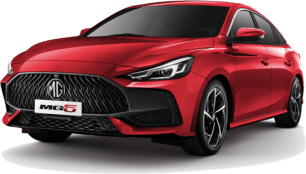Priced at $159,900 before on-road costs, the new S7 Sportback is about $20,000 cheaper than before.
While the $20,000 saving is nice, we’d argue that maybe the $180,000 pricetag for an S7 was a bit high to begin with.
Aside from the new engine (more on that below), the S7 Sportback comes standard with a laundry list of equipment, including keyless entry, push-button start, 21-inch wheels (available in three designs), adaptive air suspension, privacy glass for the rear, electric tailgate with gesture control, soft-close doors, panoramic sunroof and Matrix LED headlights.
As expected of an Audi, the interior is kitted out with leather and soft-touch materials throughout, but it's equipment such as the illuminated seat belt buckles and loose wheel-nut detection that really elevate it above its peers.
The multimedia system is displayed on a 10.1-inch touchscreen and features satellite navigation with real-time traffic alerts, wireless Apple CarPlay support, Android Auto connectivity, Wi-Fi hot-spotting, wireless smartphone charging and digital radio, while the four-zone climate controls are nestled in the lower 8.6-inch screen.
While we prefer physical buttons to a purely touchscreen set-up, Audi’s implementation is fantastic thanks to the haptic feedback from the screens, which mimic a button press.
We also like that there is a dedicated volume-control knob, meaning you aren’t fumbling around with the touchscreen while driving to turn down the music.
The S7 Sportback also features Audi’s signature 12.3-inch Virtual Cockpit panel, which is still the best application of a digital instrumentation.
We’ve gone into detail about why we love it so much in the past, but a quick recap is that it's super-easy to use, can be customised to show whatever you want to see, and is clear in its layout.
Despite the long list of equipment, there are still a few items left on the options list.
Some, such as ceramic brakes and a Dynamic Package, are aimed to improve performance around the bends, so it’s nice that the extras aimed at a particular type of customer are not bundled into the asking price for everyone.
Likewise, there are also comfort- and style-orientated choices such as carbon interior, DVD player (in 2020?), heated rear seats and a premium sound system, but with the latter costing $11,700, the S7 Sportback’s price can quickly balloon.
Eight exterior colours are also available, each a no-cost choice.

